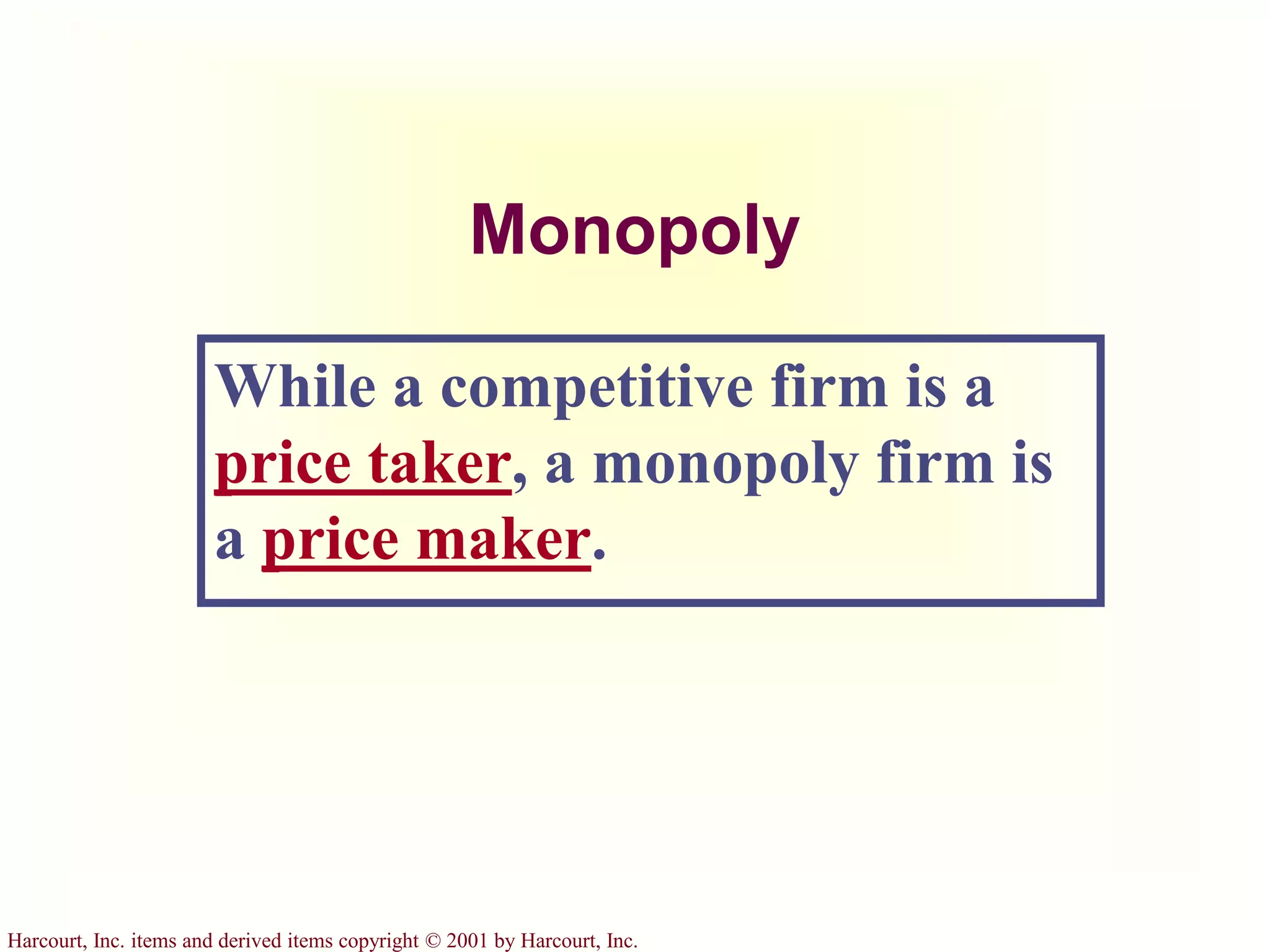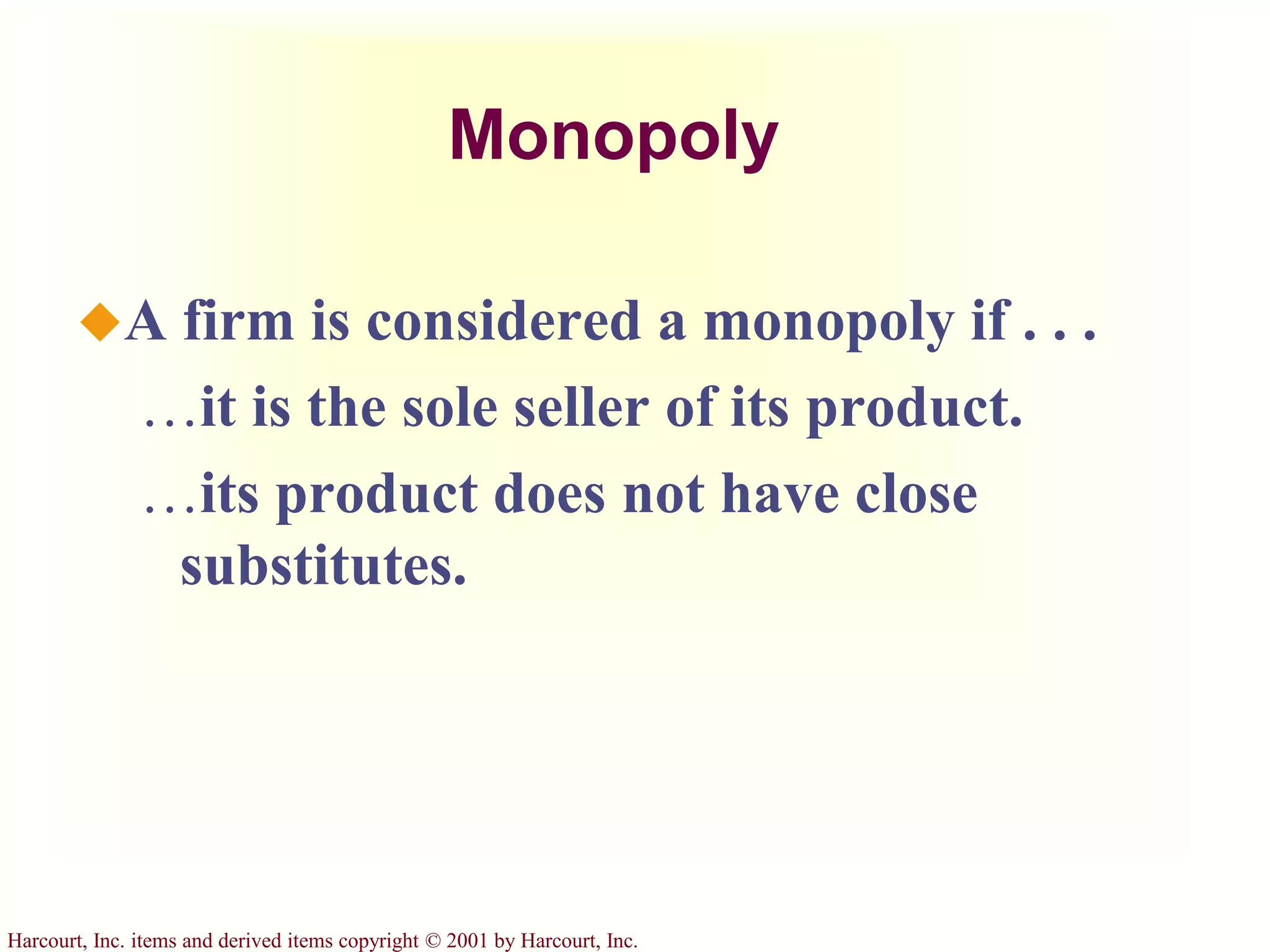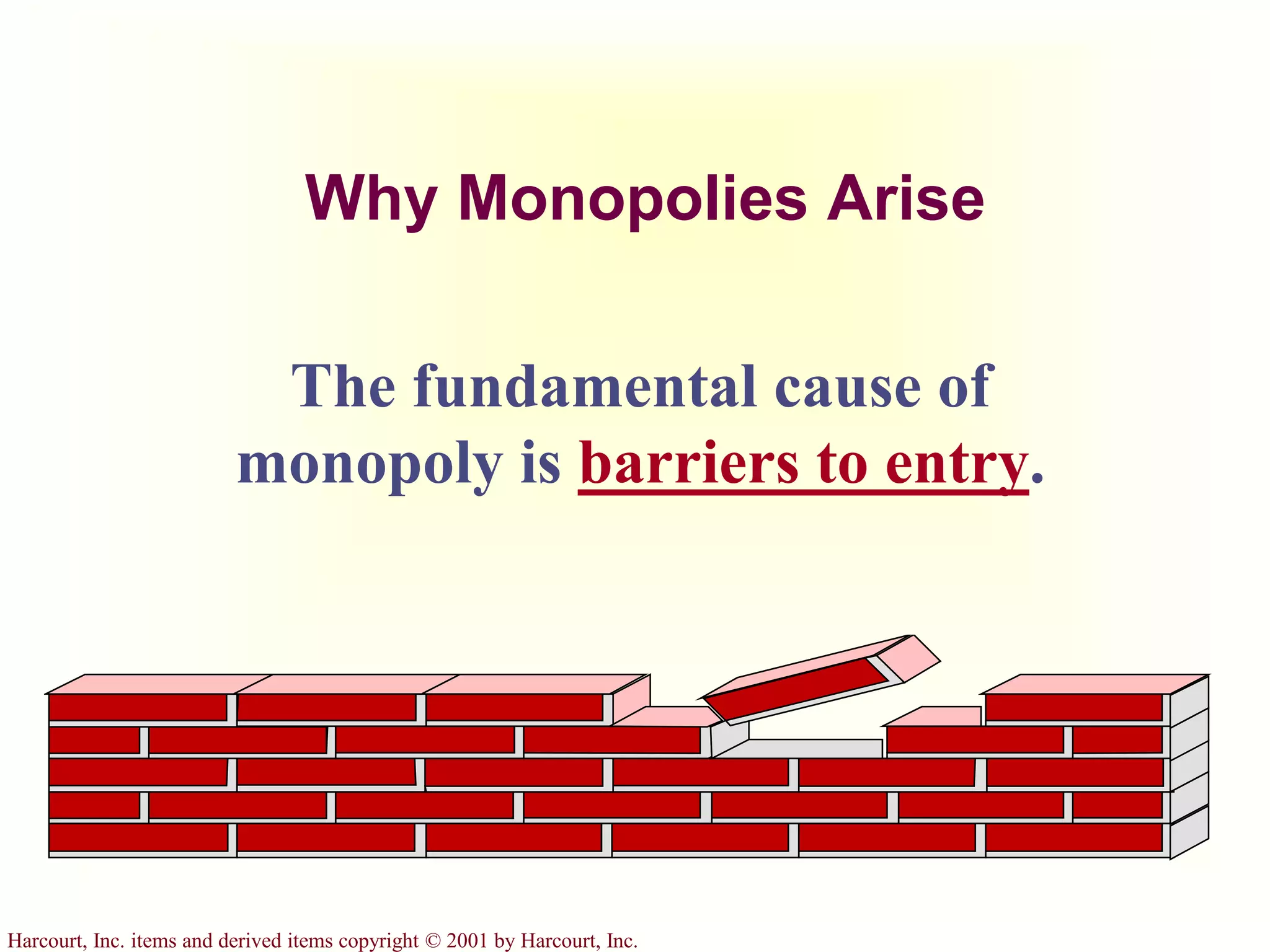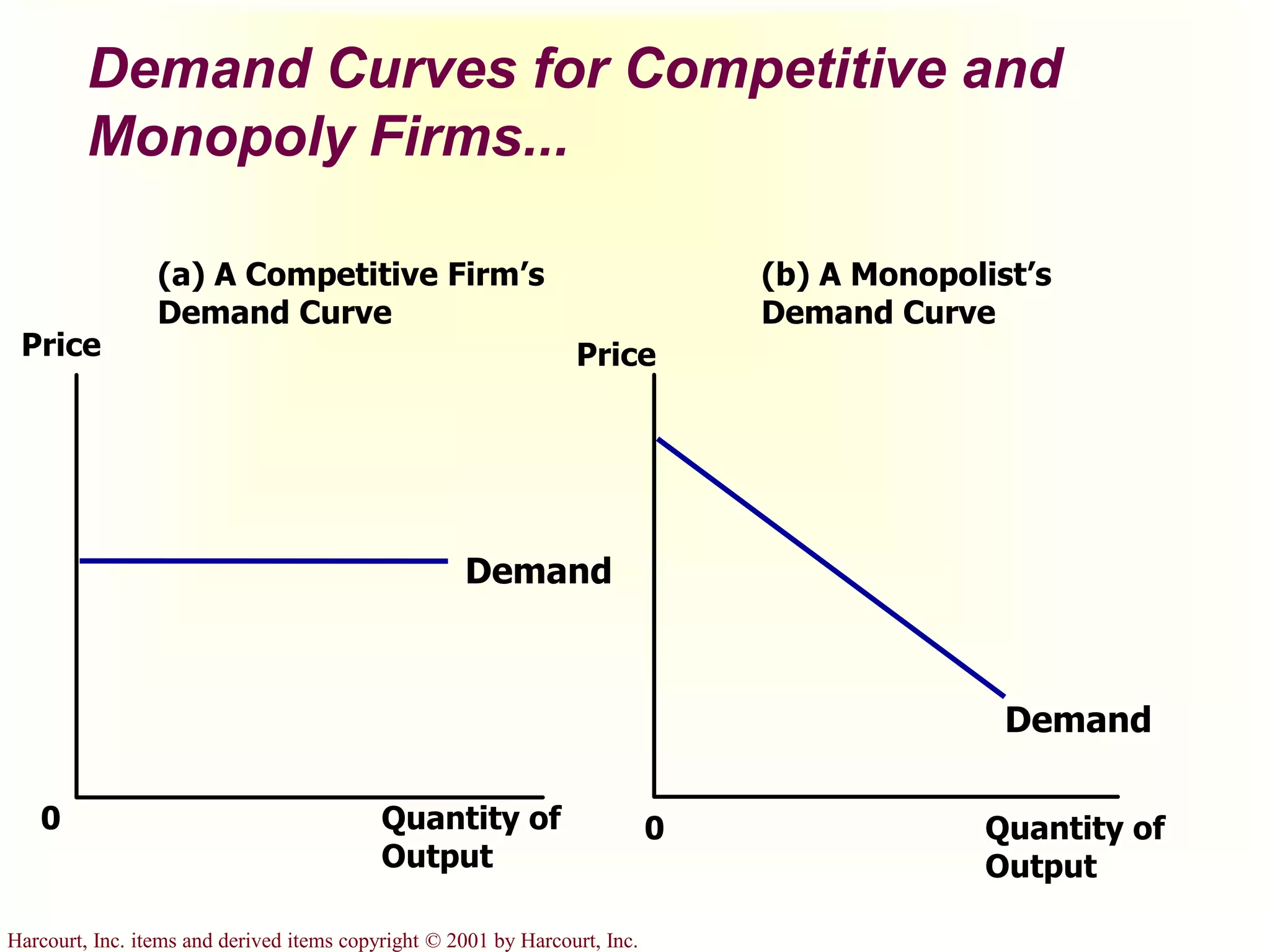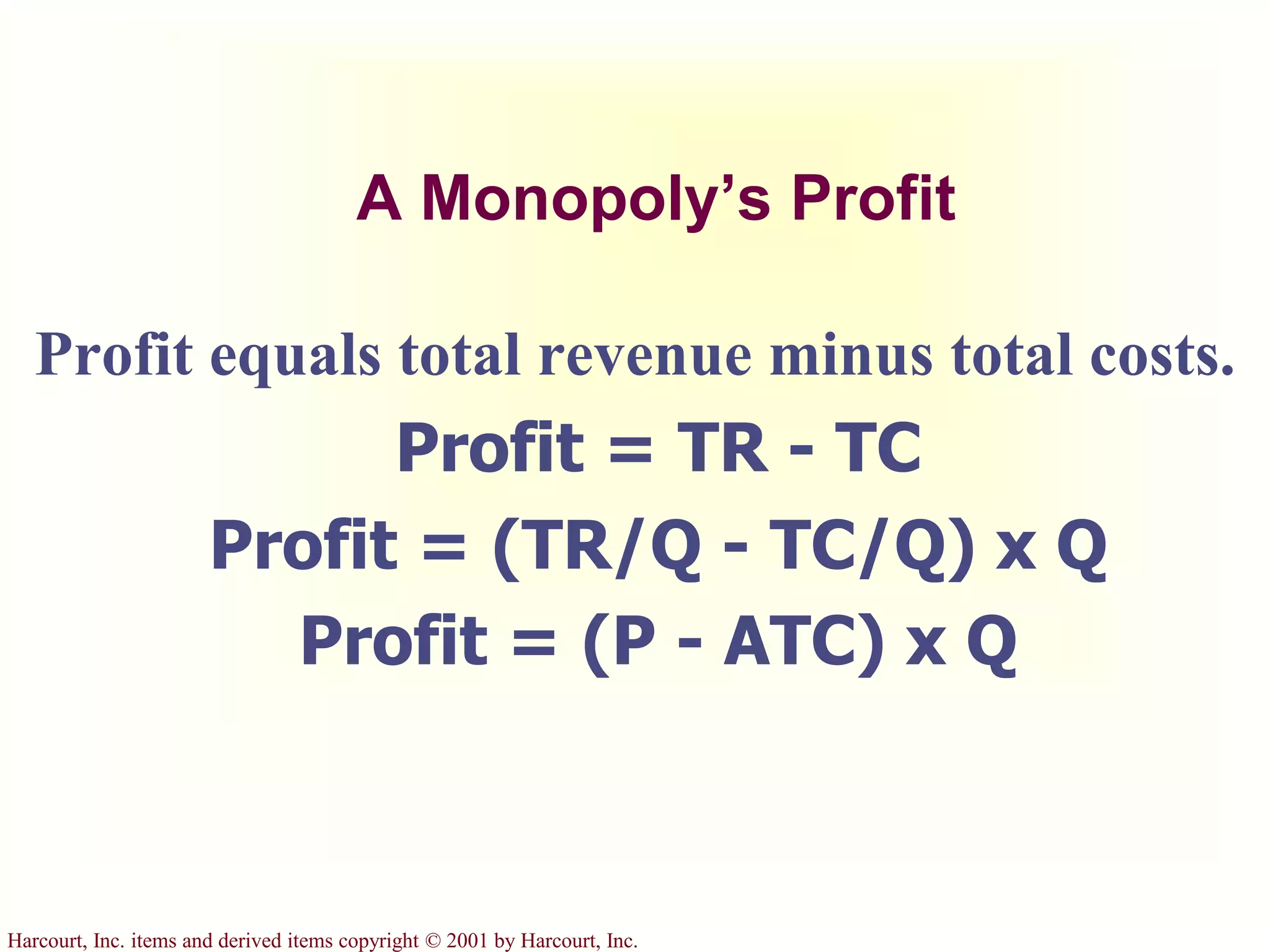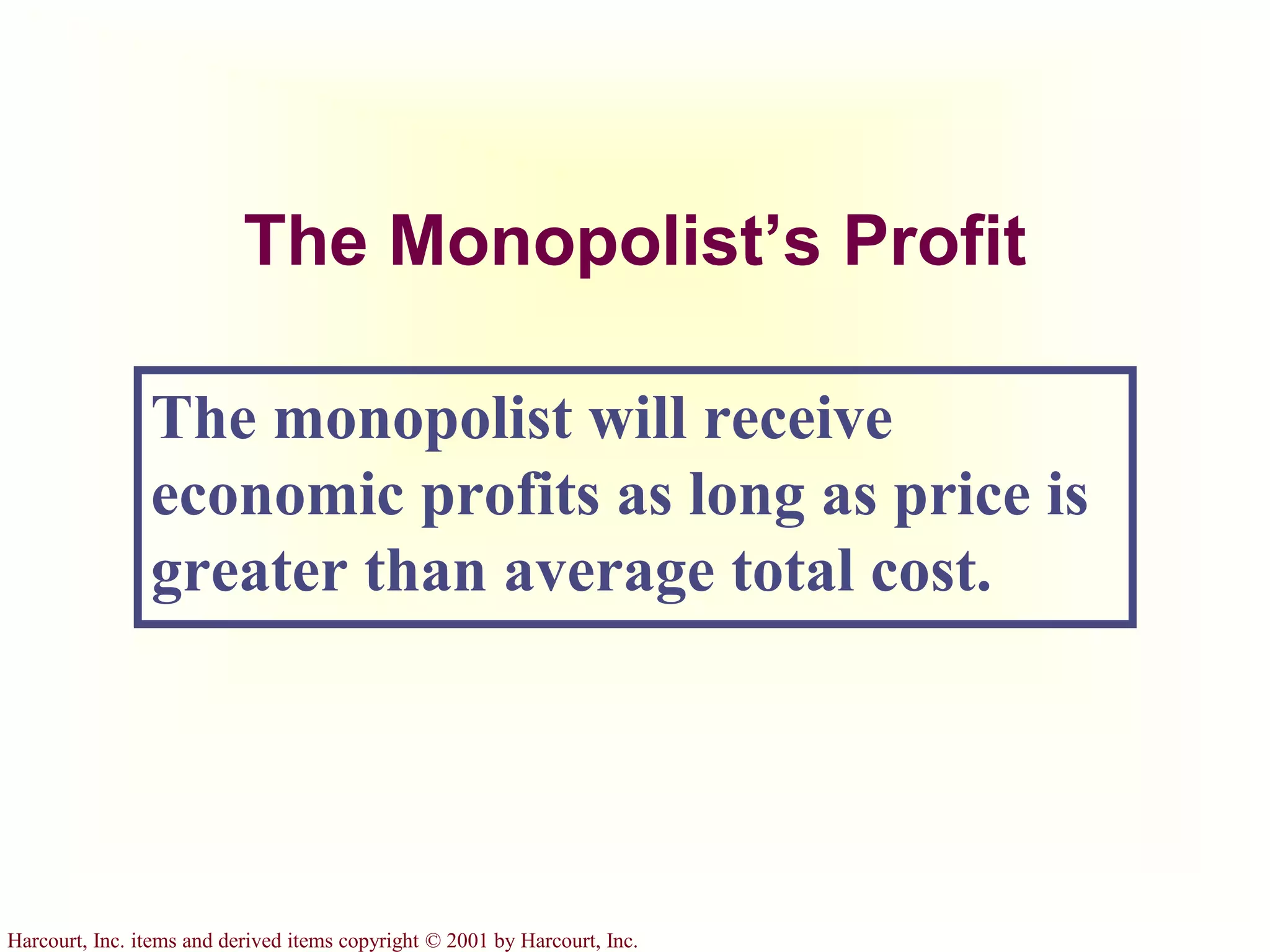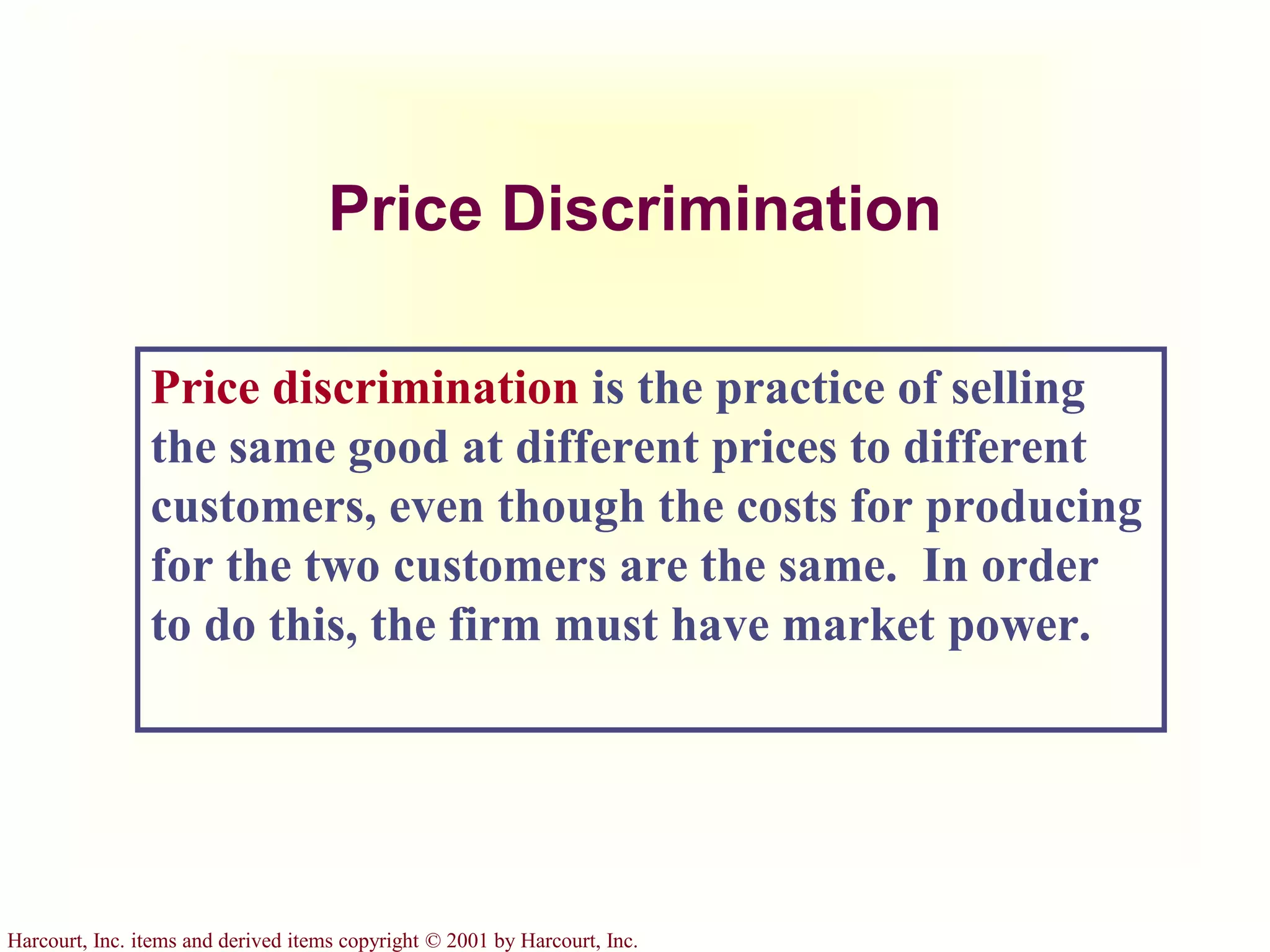The document discusses monopolies and how they differ from competitive firms. It defines a monopoly as a sole seller of a product without close substitutes, allowing it to be a price maker. Monopolies arise due to barriers to entry like owning key resources, patents, or economies of scale. As the sole producer, a monopoly faces a downward sloping demand curve and sets price based on where marginal revenue equals marginal cost to maximize profits. The government regulates monopolies to prevent excessive prices and deadweight loss through antitrust laws.

